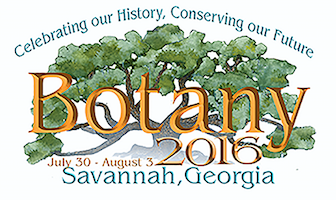| Abstract Detail
The Future of Herbarium Genetics and Genomics Barreiro, Fátima S. [1], Wales, Nathan [1], Vieira, Filipe J. G. [1], Martin, Michael D. [2], Gilbert, M. Thomas P. [1]. Common ragweed population genomics from historical herbarium vouchers. Common ragweed (Ambrosia artemisiifolia L.) is a wind-pollinated weed that is native to North America and well known for its allergenic pollen. Populations of the plant are increasingly present in Europe, Africa, Asia and Australia, and rapid evolution has been invoked to explain divergence in phenotypic and life history traits between native-range populations and invasive populations in Europe. Previous studies investigated population genetic structure in North America and in France at the end of the 19th century by characterizing nuclear microsatellites and chloroplast polymorphisms in historical herbarium specimens. This work revealed that invasive French populations developed through multiple introductions from North America, during a period in which genetic structure was rapidly changing in association with human-mediated landscape alteration in eastern North America. Only recently have genomic approaches have been applied to present-day populations of ragweed, demonstrating the increased power of reduced representation genomic sequencing to resolve genetic structure. We report preliminary results from our application of in-solution hybridization capture to nearly 100 historical herbarium specimens collected across eastern North America between 1835 and 1939. We used the Mycroarray MYbaits system to target a semi-random panel of 20,000 ApeKI-associated nuclear genomic loci previously discovered and determined to be polymorphic using a Genotyping-By-Sequencing (GBS) approach within 16 wild, present-day populations across eastern North America. After the removal of PCR duplicates, a mean of 8.2M reads produced 14X read depth (per sample) across the 20,000 loci. In comparison with native GBS, target depth and locus drop-out are less variable in our capture approach. Thus we demonstrate that this approach may be useful in future applications to herbarium material, as a relatively large number of genomic loci can be sequenced with up to 50 individuals per lane on the Illumina HiSeq 2500 platform.
Log in to add this item to your schedule
1 - University of Copenhagen, Centre for GeoGenetics, Natural History Museum of Denmark, Copenhagen, Denmark
2 - University Museum, Department of Natural History, Norwegian University of Science and Technology (NTNU), Trondheim, Norway
Keywords:
ragweed
common ragweed
population
genetics
population genomics
Genomics
Genotyping by sequencing (GBS)
Next generation sequencing
herbarium
historical
Ambrosia artemisiifolia.
Presentation Type: Symposium Presentation
Session: SY04, The Future of Herbarium Genetics and Genomics
Location: Chatham Ballroom - B/Savannah International Trade and Convention Center
Date: Monday, August 1st, 2016
Time: 4:45 PM
Number: SY04008
Abstract ID:203
Candidate for Awards:None |



